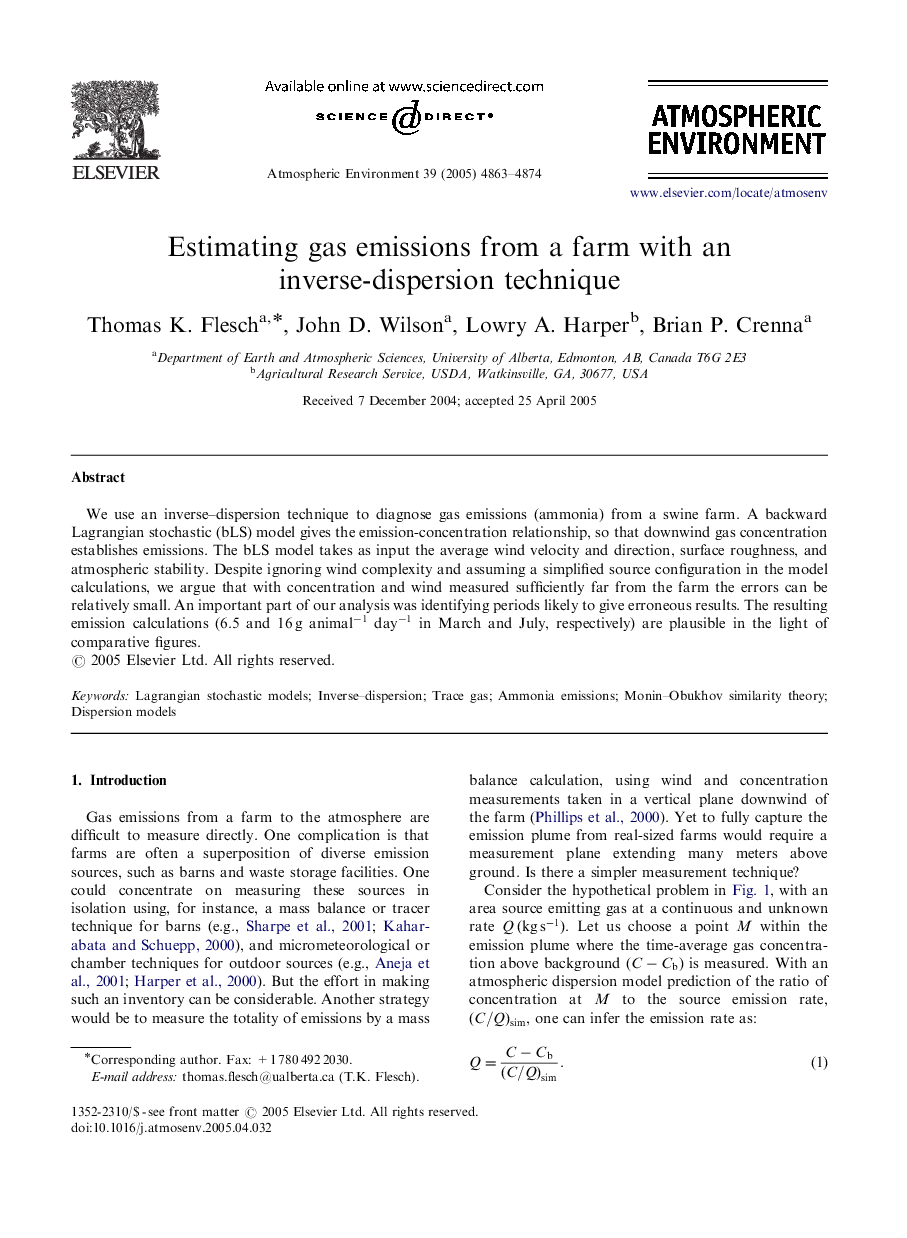| Article ID | Journal | Published Year | Pages | File Type |
|---|---|---|---|---|
| 4445078 | Atmospheric Environment | 2005 | 12 Pages |
We use an inverse–dispersion technique to diagnose gas emissions (ammonia) from a swine farm. A backward Lagrangian stochastic (bLS) model gives the emission-concentration relationship, so that downwind gas concentration establishes emissions. The bLS model takes as input the average wind velocity and direction, surface roughness, and atmospheric stability. Despite ignoring wind complexity and assuming a simplified source configuration in the model calculations, we argue that with concentration and wind measured sufficiently far from the farm the errors can be relatively small. An important part of our analysis was identifying periods likely to give erroneous results. The resulting emission calculations (6.5 and 16 g animal−1 day−1 in March and July, respectively) are plausible in the light of comparative figures.
